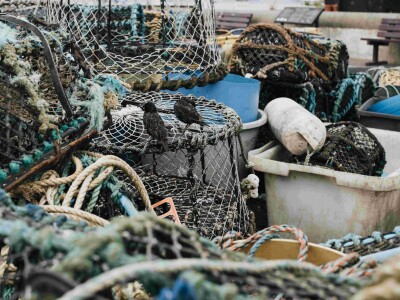NOAA just released two reports Tuesday afternoon, one regarding the assessment of U.S. fish stocks for 2013, the other highlighting the economic impacts of American commercial and recreational fishing in 2012. The agency says that taken together the two reports "show positive trends in the steady rebuilding of the country's federally managed fisheries off our coasts, and the important role fisheries contribute to the United States economy."
OK, fair enough, those are important stories to tell. But there are others the reports contain, too.
Here are the highlights NOAA presents. The nation's finfish and shellfish stocks are, overall, in pretty good shape, the agency says.
In 2013, seven stocks made it off of the "experiencing overfishing" list. Of the six stocks added to that list, the status of four had been unknown. Overall, of the 478 federally managed stocks and stock complexes whose status is known, 272 (91 percent) have been deemed not subject to overfishing in 2013. (NOAA defines "overfishing" as a stock that has a harvest rate that is higher than the rate that produces maximum sustainable yield.)
NOAA removed four stocks from the "overfished" list, but added three. The status of two of the three added had been unknown. Of the 230 stocks whose status is known, 190 (83 percent) are not overfished. ("Overfished" stocks have a biomass level depleted to a point where it's capacity to produce MSY is jeopardized.)
And two stocks have been declared rebuilt, bringing the total number of stocks rebuilt since 2000 to 34.
But it doesn't tell the whole story, says Brian Rothschild, the president and CEO of the New Bedford-based Center for Sustainable Fisheries.
"They are focused on whether stocks are overfished or not, but they're not looking at underfishing," Rothschild says, noting that in New England, groundfish quota, low as it may be, is left on the table. "That's a measure of performance they don't look at."
Moving on to the economic data, according to NOAA, U.S. commercial fishermen harvested 9.6 billion pounds of finfish and shellfish valued at $5.1 billion in 2012. That's down from 9.9 billion pounds worth $5.3 billion in 2011. Over the last 10 years, U.S. landings have largely remained in the 9 billion-pound zone, but total revenue has risen from a low of $3.3 billion in 2003 and has increased every year except for 2009 ($3.9 billion) and 2012.
On the surface things look good here in New England, too, with total revenues rising from $1.1 billion in 2011 to a 10-year high of $1.2 billion in 2012. That's up significantly from the $690 million notched in 2003.
But if you look a little deeper, you find that shellfish landings are driving New England's economic bus. Shellfish revenue totaled $947 million in 2012 whereas finfish revenues stood at $244 million.
Scallops (39.1 million pounds worth $389.3 million) and lobster (148.3 million pounds valued at $424 million) led the way in 2012. But cod and haddock landings fell from 30.1 million pounds worth $48.8 million in 2011 to 14.8 million pounds generating $29.9 million.
"We've lost a lot of boats and jobs in New England," Rothschild says. "Somehow the scallops, which are more or less positive, get rolled together with the groundfish. So when you have a port with $300 million in scallops, what happens to the groundfish is swamped."
The reports offer NOAA's view on the success of U.S. fisheries management. You can draw your own conclusions by clicking here to take a look at the Fisheries Economics of the United States 2012 and here to view the Status of U.S. Fisheries 2013 report.







